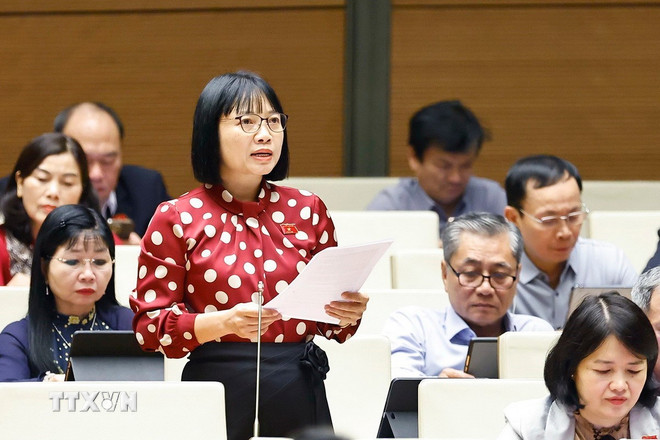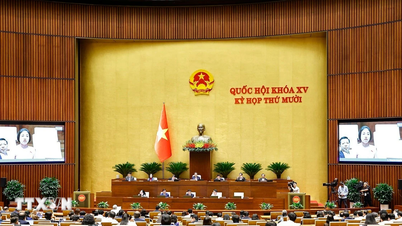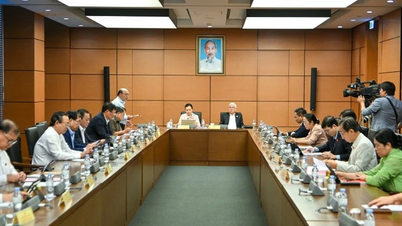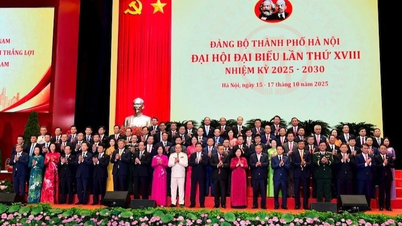According to the National Assembly's working program, it is expected that on the morning of November 3, at the 10th Session of the 15th National Assembly, Minister of Finance Nguyen Van Thang, authorized by the Prime Minister, will present the Report on the draft Law on Statistics (amended).
The Draft Law on Statistics (amended) is one of the Law projects that received attention at this session of the National Assembly with proposed amendments and supplements to form a consistent and synchronous state statistical information system from the central to the commune level, from ministries to the Ministry of Finance and from departments, branches to provincial and municipal statistics.
Over the past time, the Law on Statistics has affirmed the important position and role of statistics. The Law on Statistics is one of the important macro management tools, the legal basis for collecting and providing honest, objective, accurate, complete and timely statistical information to serve state agencies in assessing and forecasting the situation, planning strategies, developing plans, planning policies, managing and operating socio -economic development and meeting the statistical information needs of agencies, organizations and individuals at home and abroad.

However, after 10 years of implementing the Law on Statistics, a number of limitations and shortcomings have been revealed. Accordingly, in the process of implementing statistical activities, a number of issues have arisen in practice that need to be adjusted and regulated in the draft Law, specifically: information needs for management and administration at the commune level: commune-level statistical information system, commune-level statistical indicator system, commune-level statistical reporting regime to ensure smooth information flow from the central to commune level; at the same time, a number of regulations on statistical expertise and profession in the Law on Statistics need to be amended and supplemented to suit the reality and international integration...
Based on the above grounds, amending the Law on Statistics is very necessary in the current period of innovation.
Forming a statistical information system that is transparent to localities
The draft Law on Statistics (amended) will form a consistent and synchronous state statistical information system from the central to communal level, from ministries to the Ministry of Finance and from departments to provincial and municipal statistics.
Accordingly, the state statistical information system includes: national statistical information system, statistical information system of ministries and branches; provincial statistical information system; and commune-level statistical information system.
The indicator system is a collection of main, basic, core information of an information system. Therefore, indicator systems will be formed corresponding to information systems. For example, the commune-level statistical indicator system is the main, basic, core information of the commune-level statistical information system.
The Draft Law has replaced the district-level statistical information system with a commune-level information system and assigned the grassroots statistical agency the responsibility of managing and updating the commune-level statistical information system (currently, 1 grassroots statistical agency provides monthly and quarterly socio-economic statistical information for an average of 7 communes).

These regulations aim to ensure adequate socio-economic statistical information to serve socio-economic management and operation at the commune level; in accordance with the two-level local government model; and to form a complete and consistent state statistical information system from the central to the commune level to serve management and operation at all levels.
In addition, building a centralized, unified, and synchronized statistical data platform, ensuring accurate and timely information to serve leadership, management, policy making, monitoring and evaluation of socio-economic development; at the same time, overcoming the situation of scattered and fragmented data in many ministries, branches, and localities; enhancing the ability to connect, share, and integrate data to serve national digital transformation.
Clearly stipulate and separate national statistical census
The draft Law on Statistics (amended) also proposes the content: Statistical surveys outside the national statistical survey program; accordingly, it is added to stipulate that other national statistical surveys are statistical surveys outside the national statistical survey program in order to clearly stipulate and separate the national statistical surveys in the National Statistical Survey Program. This is a large-scale, wide-ranging survey related to many fields and requires centralized and unified direction from the central government.
This regulation ensures transparency and ease of monitoring during the implementation process, while creating a complete legal basis for ministries, branches and localities to develop plans, allocate resources and coordinate the effective implementation of national statistical censuses, serving the requirements of macro management and administration, policy making and international comparison.
Along with that, the statistical investigation plan: revised and supplemented to suit the reality. Accordingly, the addition of "period" and "time for collecting information" helps to clearly define the scope, cycle and time period of the investigation, ensuring the accuracy and timeliness of statistical information.
At the same time, amending the regulations on "information processing and result synthesis procedures" instead of the previous expression of only "processing procedures" will fully reflect the steps in the survey data processing chain, from collection to synthesis and output presentation.
This regulation contributes to improving transparency, science and efficiency in organizing statistical surveys, creating favorable conditions for standardizing and modernizing statistical work, meeting management and operation requirements in the new period.
The purpose of promulgating the Law on Statistics (amended) is to fully and promptly institutionalize the Party's policies and guidelines related to statistical work, meet the requirements of organizing the apparatus and assigning functions and tasks of state management of statistics; continue to perfect the legal framework for statistical activities; ensure the provision of accurate, objective, timely statistical information, correctly and fully reflecting the socio-economic situation in each period; help analyze, plan and operate macro policies; ensure international comparison requirements in all fields and modernize statistical activities associated with digital transformation.
The General Statistics Office said that compared to the Law on Statistics, the draft Law on Statistics (amended) retains 37 articles; amends 35 articles; of which, 12 articles only amend the contents related to the names of ministries, branches, agencies, units, state statistical organizations, and 2-level local government organizations; and adds 2 articles.
The Draft Law on Statistics (amended) does not generate human and financial resources for implementation after the Law is passed.
Currently, the Ministry of Finance is in the process of streamlining its apparatus according to the general requirements of the Party and the State; at the same time, promoting the application of information technology and digital transformation in statistical activities. Therefore, the draft Law, after being approved, will be implemented in the direction of saving human and financial resources./.
Source: https://www.vietnamplus.vn/sua-doi-luat-thong-ke-dong-bo-thong-tin-nang-cao-hieu-qua-quan-ly-post1074477.vnp






![[Photo] President Luong Cuong receives US Secretary of War Pete Hegseth](https://vphoto.vietnam.vn/thumb/1200x675/vietnam/resource/IMAGE/2025/11/02/1762089839868_ndo_br_1-jpg.webp)
![[Photo] Lam Dong: Images of damage after a suspected lake burst in Tuy Phong](https://vphoto.vietnam.vn/thumb/1200x675/vietnam/resource/IMAGE/2025/11/02/1762078736805_8e7f5424f473782d2162-5118-jpg.webp)




































































































Comment (0)